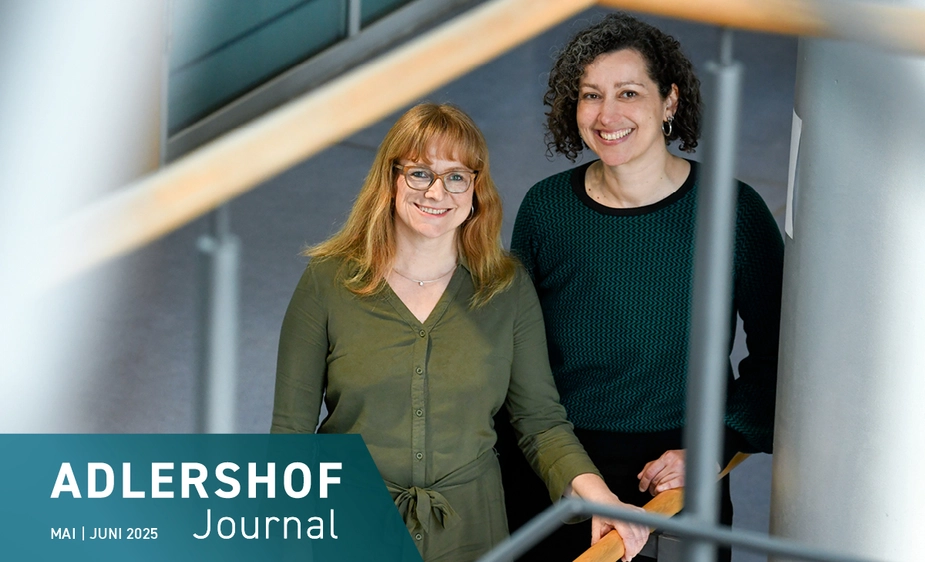In conversation with Ana Anselmo and Silvia Zerbe
As diversity officers at Helmholtz-Zentrum Berlin, they shape diversity
When 1,400 employees from 70 nations come together at a globally operating research institution like Helmholtz-Zentrum Berlin für Materialien und Energie (HZB), diversity may seem like a given. And yet, considerable effort is required to make different perspectives visible and to embed diversity in the day-to-day culture. That’s precisely what Ana Anselmo and Silvia Zerbe are working towards—as a tandem team.
Adlershof Journal: Why do you share the role of diversity officer at HZB?
Silvia Zerbe: Independent from each other, we were both in working groups during a diversity audit of Stifterverband, a science foundation, which HZB was the first non-university research institute to go through, because the topic was close to both of our hearts. When the position was being filled, it was clear to us that we only wanted to take it on as a team.
Ana Anselmo: I really value the perspective we gain from our different backgrounds. We also work in different areas: Silvia works in internal communications and acts as deputy press spokesperson. I’m responsible for international affairs. I’m originally from Portugal and completed my doctorate in Sweden. With our backgrounds, we complement each other well.
What measures have you already implemented?
Zerbe: We regularly invite our new colleagues to welcome sessions. The idea is to welcome them on a personal level and to convey the HZB’s core values like respect and openness. Every six months, we organise an exchange on diversity issues, which gives us valuable feedback regarding improvements and ideas for further training.
Anselmo: We've also addressed the importance of making information available to staff members in English. When emails are only written in German, people feel excluded. Our colleagues have really been appreciating the change. Another area we're looking into is recruitment. Here, we’re looking into what’s possible to ensure that people from a wide range of backgrounds and experiences feel encouraged to apply.
Why does diversity need people who take care of it?
Zerbe: Diversity happens when people with different experiences come together. Through our work, we want to help ensure that this difference is viewed as something positive. Naturally, not everyone sees diversity as essential. But for us as a scientific institution, it is. It’s absolutely vital. Complex problems can only be solved with a variety of perspectives.
Anselmo: There’s a proverb that says “If you want to go fast, go alone. If you want to go far, go together.” It’s more effort, but ultimately more rewarding.
What makes the HZB stand out in this regard?
Anselmo: What’s truly unique is the incredible diversity our international staff and visiting researchers bring with them. Each year, around 2,700 researchers from 28 countries come to our BESSY II synchrotron light source, with more places being added all the time.
Zerbe: I also think it’s worth highlighting how much emphasis we place on work–life balance. We acknowledge and support different circumstances and personal situations, for example, through one-to-one counselling, talks, and workshops.
Anselmo: Since 2023, we’ve been taking part in Berlin’s Lesbian and Gay City Festival—that draws half a million visitors—to showcase HZB as a diversity-friendly employer. With many colleagues taking part voluntarily, it brings us together as a team.
Zerbe: That’s a success on many levels. It allows us to step outside our bubble and present our research to an audience that might not be primarily interested in science. Especially this year, with the political shifts in the US and the rise of AfD in Germany, we both feel it’s more important than ever to take a stand and show that research thrives on the diversity of people.
Peggy Mory for Adlershof Journal
